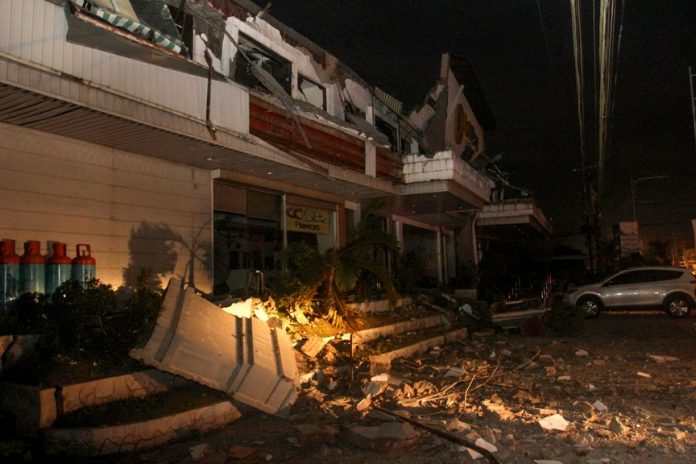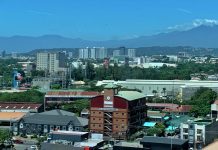
Another temblor may be in the offing along the Philippine Fault Zone which generated last week’s magnitude 6.7 earthquake off Surigao del Norte province.
Movement of PFZ’s Surigao segment triggered such earthquake and may have also “disturbed” any of the adjacent Leyte and Mindanao segments, possibly increasing chance for a new temblor there, noted science research specialist Rhommel Grutas from State-run Philippine Institute of Volcanology and Seismology (Phivolcs).
“We can’t predict when that temblor will occur so communities atop such segments must prepare accordingly,” he said, cautioning about possible onslaught of another earthquake along PFZ.
Ensuring structural stability of houses and other structures as well as regularly conducting earthquake drills are part of such preparation, he noted.
Grutas said PFZ’s Leyte segment extends northwards up to Leyte island in the Visayas.
PFZ’s Mindanao segment extends to Southern Mindanao, he continued.
In its latest situation report this week, National Disaster Risk Reduction and Management Council (NDRRMC) said the magnitude 6.7 earthquake last Friday (Feb. 10) affected almost 5,200 people in Surigao del Norte.
Eight persons were reported dead due to that earthquake while 202 people sustained injuries, noted NDRRMC.
NDRRMC also said the earthquake damaged school facilities, a hospital, roads, bridges, and around 1,034 houses in Surigao del Norte.
According to Phivolcs, the 10:03 p.m. earthquake last Friday struck 14 kms north 78° west of Surigao City at a depth of 11 kms.
That earthquake was of significant magnitude so there’s possibility this affected either the Leyte or Mindanao segment, Grutas noted.
He, however, stressed it’s still too early to confirm if the earthquake actually affected any of those segments.
He said data over time will indicate if such happened.
Phivolcs reported already monitoring, as of 9 a.m. Monday (Feb. 13), 151 aftershocks from the Surigao earthquake.
Six of those aftershocks were reported felt, said Phivolcs science research analyst Wilmer Legaspi.
He noted some of the aftershocks occurred at depths deeper than what Phivolcs reported for Friday’s earthquake.
Some of the aftershocks were also moderately strong as these ranged from magnitude 4.0 to 4.9, Phivolcs data show.
Grutas assured such aftershocks are normal as these can be expected from strong earthquakes like the one off Surigao last Friday.
“We can even expect stronger aftershocks from that earthquake,” he said.
He clarified the aftershocks from Friday’s earthquake won’t be stronger than this main shock. (PNA)






